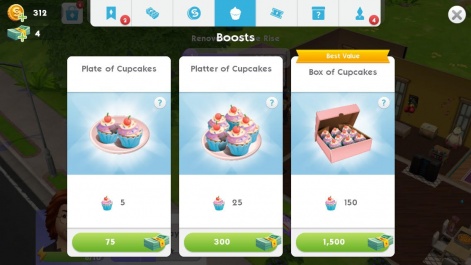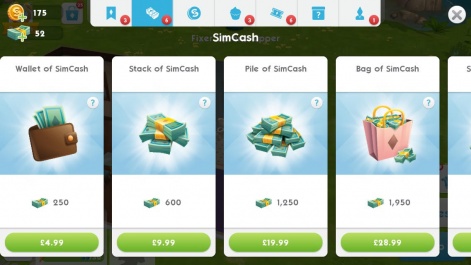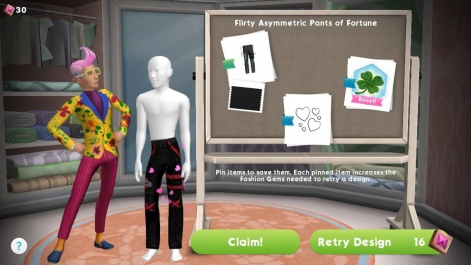Welcome back to the In-App Purchase Inspector - our regular look at free-to-play games from the consumer's perspective.
In each instalment, we consider the incentives or pressure applied to make in-app purchases, their perceived value, the expansion offered by IAPs and the overall value of the experience.
The end goal is to see whether the game makes a good enough case for us to part with our cash, or whether players are content – or engaged enough – to 'freeload'.
This time we're taking a look at The Sims Mobile, the latest free-to-play mobile entry in EA's classic life simulation series.
Free for all
Of all EA's properties, The Sims probably has the broadest appeal. It's been incredibly successful on PC and in more recent years on console.
It was always a prime candidate for a free-to-play mobile version, then. And while The Sims Freeplay may not be favoured by The Sims purists, it's been a successful game with more than 200 million downloads.
Now more than six years old, however, The Sims Freeplay is becoming somewhat long in the tooth.
Players can still create Sims, design homes, cultivate relationships and embark on careers.
The Sims Mobile, soft-launched in May 2017 before its eventual worldwide release on March 6th 2018, is setting out to bring the franchise up to date on mobile. But does it succeed?
The Sims, on mobile
While obviously simplified, The Sims Mobile feels very much like a distillation of The Sims' core appeal.
It's much less open-ended, but players can nonetheless create Sims, design their homes, cultivate their relationships and set them off on careers.
The key difference, as with any free-to-play game, is that it has to take longer to do all these things for the model to work. The Sims Mobile's economy is built around this basic principle.
So for starters, every day comes with a daily to-do list: the busywork that's required each day to earn the required currency and experience to progress. Experience allows the player to level up, which in turn unlocks new types of events and interactions.
More straightforwardly, there's an energy system that limits the number of actions each Sim can perform. A Sim's energy can be restored either by having them take a 'power nap', which restores 10 energy though is only available every 24 hours, or by using a Cupcake consumable.

Regular Cupcakes can be bought using hard currency SimCash (more on that shortly), or earned by completing a list of daily tasks. One cupcake instantly restores all a Sim's energy.
When participating in party events, a Sim's energy meter is temporarily replaced with a smaller, event-specific one. A Sim has 10 energy points by default during parties, but Party Cake consumables can maximise schmoozing potential by adding (or restoring) a further 10.
What is Sim and what is real?
Of course, good old Simoleons feature in The Sims Mobile. The series' long-standing currency is the soft one here, earned by completing quests and used primarily to buy new furniture and clothing.
The aforementioned SimCash is the hard currency, which is also earned by completing some quests, albeit in much smaller quantities. It comes in packs ranging in price from $4.99 for 250 to 7,500 for $99.99.

As discussed, SimCash can be used to top up a Sim's energy. Events, which usually either require active player involvement or an hours-long wait to complete themselves, can be ended early using SimCash.
Another way in which SimCash can be used to accelerate progress is by unlocking additional character slots immediately. The Sims Mobile begins with the player having only one Sim to watch over, with this number eventually growing to four as they gain experience and level up.
All Tickets can be earned for free through specific actions, but can also be bought using SimCash.
But for 175 SimCash – approximately $3.50 – another playable Sim can be created early.
Meanwhile, more predictably, some premium items of clothing and furniture can only be bought using SimCash.
Life is a lottery
Then things get more complicated with the introduction of Tickets and their very specific functions.
Home Tickets can be used in lieu of other currencies to buy certain furniture, while Sim Tickets perform the same function for Sim apparel.
Then there are three grades of Heirloom Ticket – regular, super and luxe – which can be used to buy items that unlock certain traits for your Sim. This, in turn, allows them to access new paths.
Then there are Fashion Gems, which is the area most clearly influenced by free-to-play mobile design practises. 20 of these can be used to create a piece of clothing imbued with a random stat boost, in what's essentially a gacha system.

The really clever part, though, is the encouragement to retry for a better outcome.
Say that a player ends up with some brown trousers that increase charisma, but would prefer a jacket. They can then pin the elements they're happy with – each retained aspect adding to the cost of a second spin – and re-roll the rest.
All Tickets and Fashion Gems can be earned for free through specific in-game actions, but can also be bought using SimCash.
No surprises
For the most part, then, The Sims Mobile just feels like what it is: a polished free-to-play mobile game in 2018.
This means it's no shock to see the pitching of economical starter packs for new players, including the Sweet Deal pack which offers 50 Cupcakes and 550 SimCash – a haul of Cupcakes that is worth $9.99 under normal pricing, plus 300 more SimCash than is usually given for this price – for $4.99.
Equally, the occasional option to watch a video ad to increase rewards from completing a task is hardly unexpected.
The Sims Mobile exists to bring the series up-to-date on a platform that holds huge potential for it, and judging by the early signs it has a lot going for it.























